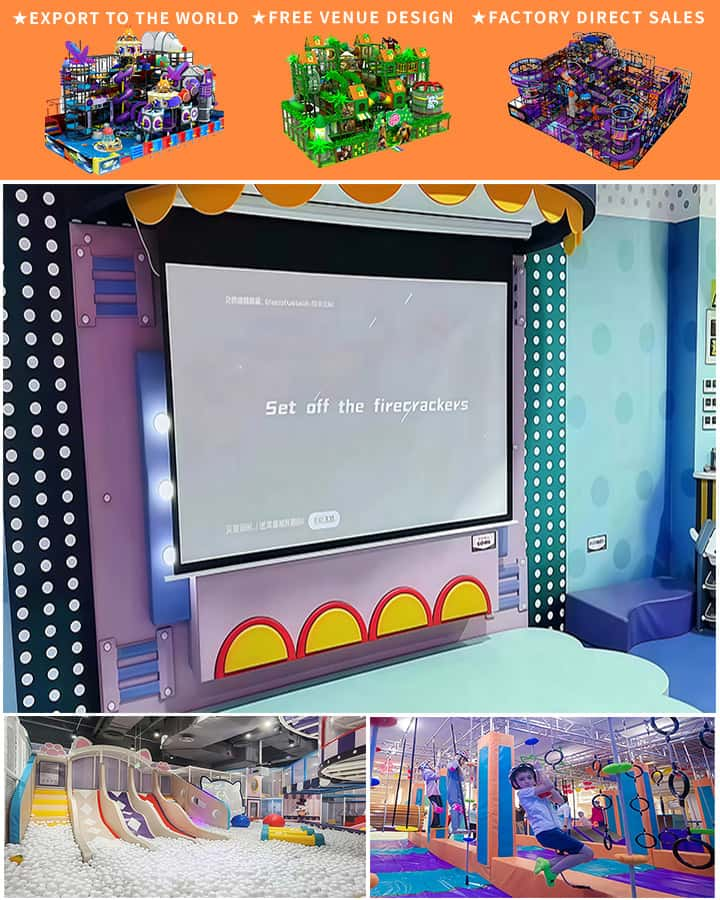As children grow older, their need for physical activity and imaginative play remains just as crucial, albeit in more sophisticated forms. An indoor playground tailored for older children not only meets their energy needs but also offers a safe environment where they can socialize, learn, and develop essential motor skills. Let’s explore how to create the ultimate indoor playground that caters to the unique needs of older kids.
Safety First
Safety is paramount when designing an indoor playground for older children. Unlike toddlers, older kids are more physically capable but also more prone to taking risks. Ensure that the playground equipment is age-appropriate, with sturdy construction, non-toxic materials, and rounded edges to minimize injuries. Install soft flooring or ample padding to cushion falls and wipes outs.
Diverse Equipment Options
Older children require diverse equipment to keep them engaged and challenged. Consider including:
Climbing Walls: These provide an excellent full-body workout and help develop problem-solving skills. Differentiated levels of difficulty can cater to varying skill sets.
Zip Lines: A thrilling addition that combines fun with a bit of adrenaline rush, zip lines encourage coordination and balance.
Trampolines: Great for developing coordination and providing an outlet for boundless energy, trampolines should be equipped with safety nets to prevent falls.
Ninja Courses: Incorporating elements like ropes, rings, and obstacles mimics the popular TV shows and allows for dynamic, versatile play.

Interactive Games: Arcade-style games or digital interactive stations can offer a break from physical activities while still engaging the mind.
Themed Areas
To make the indoor playground more engaging, consider creating themed areas:
Adventure Land: With climbing structures, slides, and obstacle courses, Adventure Land can become a haven for budding explorers.
Sports Arena: Basketball hoops, soccer goals, and mini golf courses offer opportunities for friendly competition and team play.
Science Zone: Interactive exhibits focused on STEM (Science, Technology, Engineering, Math) can turn playtime into a learning experience.
Creative Corner: An arts and crafts area with tables, drawing supplies, and building blocks can foster creativity and collaboration.
Social Spaces
Older children are at a stage where social interaction is critical for development. Designate areas within the playground specifically for socializing:
Quiet Lounges: Cozy seating areas where kids can relax and chat between activities.
Group Project Stations: Large tables or collaborative spaces for group tasks or team challenges.
Event Spaces: Small stages or multipurpose rooms for hosting birthday parties, workshops, or special events.
Staff and Supervision
Ensure that there is adequate staffing to supervise the playground effectively. Well-trained attendants can manage the equipment, mediate conflicts, and ensure the safety protocols are followed without stifling the children’s enjoyment.
Cleanliness and Maintenance
Regular cleanliness and maintenance are vital to ensuring a healthy and hygienic environment. Set up routine cleaning schedules and perform regular checks to identify and fix any wear and tear promptly.
Conclusion
An indoor playground for older children should be a balanced mix of physical challenge, creative exploration, and social engagement. By prioritizing safety, diversity in equipment, thoughtful theming, and effective supervision, you can create a space where older kids will love to spend their time. Such a playground not only serves as a venue for fun but also as a foundation for physical health, social skills, and intellectual growth—all wrapped up in one exciting package.




